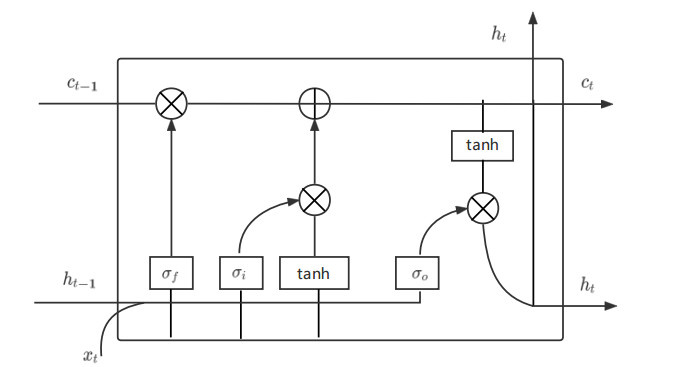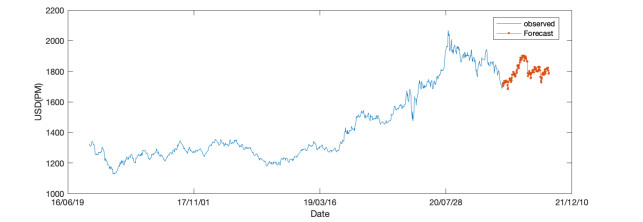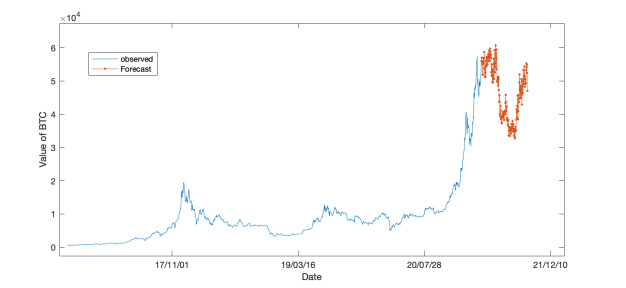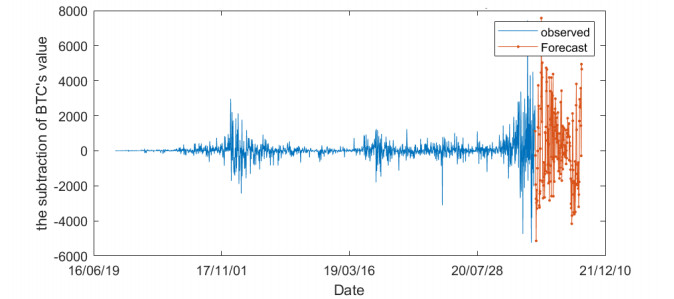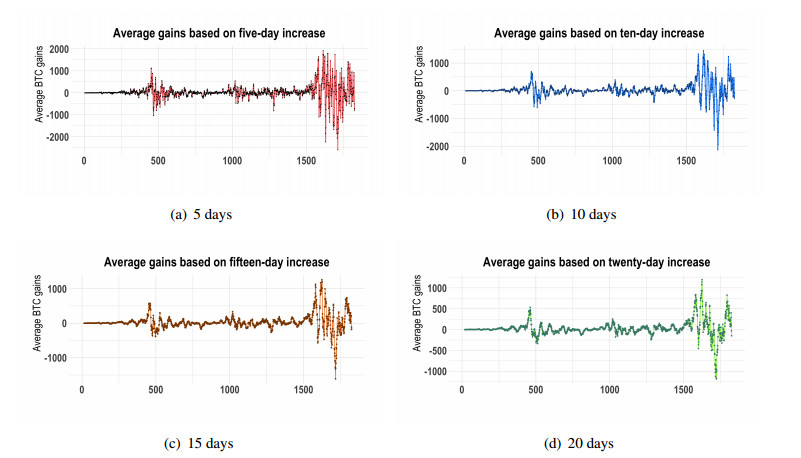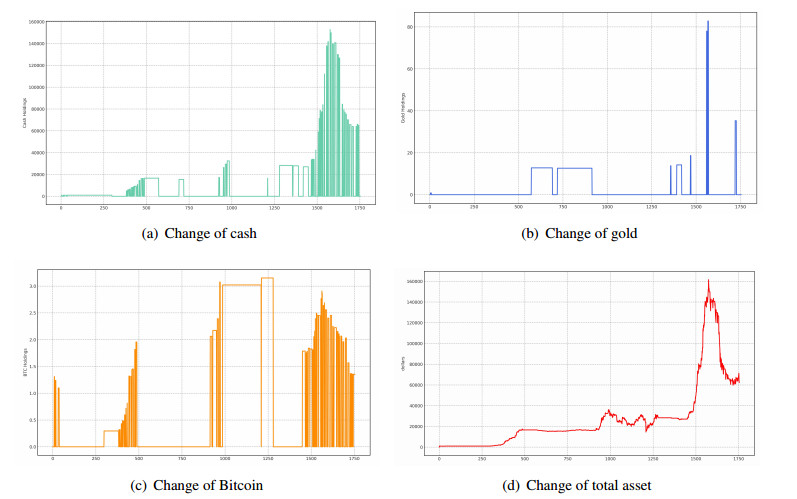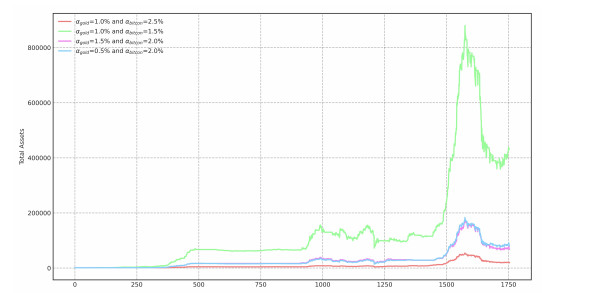1.
Introduction
To solve complicated real-life problems in different disciplines such as engineering, economics and social science, the available techniques in classical mathematics are not fruitful because of the presence of different kinds of uncertainties. There are many mathematical tools and approaches to deal with managing uncertainty. However, all these proposed approaches have their own specific limitations. Soft set theory is a powerful mathematical tool for handling uncertainty and vagueness. The idea of soft set was first presented by Molodtsov [25]. In recent times, works on soft set theory are growing rapidly. Maji and co-workers [23] considered the new notion of the soft set and gave a utilization of soft set in a decision-making issue. Ali and co-workers [3] defined a few new types of operations in soft set theory. Chen and co-workers [7] discussed the parameterizations minimization of soft sets and its utilizations. Cagman and Enginoglu [5,6] proposed the idea of a soft matrix and utilized it in uni-int decision-making problems. Meanwhile, Feng and co-workers [13] proposed the generalized uni-int decision-making schemes based on choice values of soft sets. Ignatius and co-workers [15] illustrated hybrid models in decision-making under uncertainty. Zhang and co-workers [54] presented a new technique for positioning fuzzy numbers.
In 2001, Maji and co-workers [22] originally proposed the idea of a fuzzy soft set. After that Roy and Maji [31] discussed the utilization of a fuzzy soft set in the decision-making problem. Feng and co-workers [12] gave the limitations of the decision-making method discussed in [31] and proposed a customizable methodology to fuzzy soft set based decision-making. Guan and co-workers [14] defined a new order relation on a fuzzy soft set and discussed its utilization. In view of grey theory, Kong et al. [17,18] proposed utilization of a fuzzy soft set in decision-making issues. In 2010 Majumder et al. [24] proposed the idea of generalized fuzzy soft sets. Sebastain and Ramakrishnan [32] proposed a new kind of fuzzy set, namely a multi-fuzzy set and discussed a few fundamental paradigms of multi-fuzzy subsets. Meanwhile, Yang and co-workers [44] introduced the concept of a multi-fuzzy soft set (MFSS) and discussed an application of an MFSS in the decision-making problem. Yang and co-workers [45] introduced the notion of bipolar MFSS. Zhang and co-workers [52] discussed the application of the possibility of an MFSS in decision-making. Dey and Pal [10] introduced the idea of the generalized MFSS and gave an application in decision-making problems.
In 2010 a new type of fuzzy set called hesitant fuzzy set (HFS) was proposed by Torra [34]. Rodryguez et al. [30] studied the art and future direction for a HFS. Xia et al. [40] studied some interesting properties of HFSs. Bedregal et al. [4] introduced the agammaegation functions for typical hesitant fuzzy elements and the action of automorphism. Wei et al. [36] illustrated the concept of hesitant interval-valued agammaegation operators for MADM issues. Xu and Xia [41] discussed the distance and similarity measure for HFSs. The concept of hesitant fuzzy power agammaegation operators introduced by Zhang [50]. Also, Zhang et al. [48,49,51] discussed the induced generalized hesitant fuzzy operators for multiple attribute group decision-making. Wei [38] investigated the MADM issue based on the agammaegation operators with interval-valued hesitant fuzzy uncertain linguistic data. Ren and Wei [29] discussed the MADM technique with a prioritization relationship and dual hesitant fuzzy selection statistics. Dey and Pal [11] extended the MFSS to HFS theory and applied it in topological spaces. Liang et al. [19,20,21] introduced hesitant fuzzy three-way decision making problems. Xia and Xu [39] applied hesitant fuzzy information agammaegation in decision-making. For recent developments of hesitant set theory and related topics, the readers are referred to [1,2,8,9,16,26,27,28,33,35,42,43,46,47,53,55].
Motivated by the extensive works on multi-fuzzy soft set [44], hesitant fuzzy soft set [35], interval-valued hesitant fuzzy soft set [53], hesitant power agammaegation operators [50] and their applications, we combine hesitant fuzzy set and multi-fuzzy soft set, and introduce hesitant multi-fuzzy soft set. We present a few interesting operations on hesitant multi-fuzzy soft subsets. In order to give a new approach to decision-making problems, we introduce a new level soft set named as RMSS-level soft set and propose a general algorithm to take care of decision-making methods by using hesitant MFSS theory. We briefly discusses the basic definition and results which are needed in this article such as soft set, fuzzy soft set, MFSS and HFS. We introduce a hesitant multi-fuzzy set, hesitant MFSS and also established the operations of this model in detail. Next, we establishes the RMSS-level soft set and also gives a general algorithm to decision-making based on the hesitant MFSS. Meantime, a socialistic problem, in reality, is proposed to discuss the decision-making method and validity is also verified successfully. At last we conclude our research and set up a future research direction.
2.
Preliminaries
From the literature, we recall some definitions for the improvement of hesitant MFSS. Throughout this paper, U refers to an initial universal set, E is a set of parameters, P(U) is the power set of U and A⊆E.
Definition 2.1. [25](Soft set) A soft set over U is the pair (F,A), where F is a mapping given by F:A→P(U).
Thus, a soft set over is a mapping from a set of parameters A to P(U), and it is not a set, but a parameterized family of subsets of U.
Example 2.2. Let U={b1,b2,b3,b4,b5} be a set of bikes under consideration. Let A={e1,e2,e3} be a set of parameters, where e1= expensive, e2= beautiful and e3= good milage. Suppose that F(e1)={b2,b4}, F(e2)={b1,b4,b5}, F(e3)={b1,b3}. The soft set (F,A) describes the "attractiveness of the bikes". F(e1) means "bikes (expensive)" whose function value is the set {b2,b4}, F(e2) means "bikes (beautiful)" whose function value is the set {b1,b4,b5} and F(e3) means "bikes (good milage)" whose function value is the set {b1,b3}.
Definition 2.3. [22](Fuzzy soft set) Let ˜P(U) be all fuzzy subsets of U. A fuzzy soft set over U is a pair (˜F,A), where ˜F is a mapping given by ˜F:A→˜P(U).
Thus, a soft set over is a mapping from a set of parameters A to a fuzzy subset of ˜P(U).
Example 2.4. Consider Example 1. The fuzzy soft set (˜F,A) can describe the "attractiveness of the bikes" under the fuzzy circumstances.
˜F(e1)={b1/0.3,b2/0.8,b3/0.4,b4/0.7,b5/0.5},
˜F(e2)={b1/0.7,b2/0.2,b3/0.4,b4/0.8,b5/0.9},
˜F(e3)={b1/0.6,b2/0.4,b3/0.7,b4/0.2,b5/0.1}.
Definition 2.5. [32] (Multi-fuzzy sets) Let k be a positive integer. A multi-fuzzy set ˜A in U is a set of ordered sequences ˜A={u/(μ1(u),μ2(u),…,μk(u)):u∈U}, where μi∈˜P(U), i=1,2,…,k.
The function μ˜A=(μ1(u),μ2(u),…,μk(u)) is called the multi-membership function of multi-fuzzy set ˜A, k is called dimension of ˜A. The set of all multi-fuzzy sets of dimension k in U is denoted by MkFS(U).
Note 2.6. A multi-fuzzy set of dimension 1 is a Zadeh's fuzzy set, and a multi-fuzzy set of dimension 2 with μ1(u)+μ2(u)≤1 is the Atanassov's intuitionistic fuzzy set.
Definition 2.7. [44](Multi-fuzzy soft set) A MFSS of dimension k over U is a pair (˜F,A), where ˜F is a mapping given by ˜F:A→MkFS(U).
A MFSS is a mapping from parameters to MkFS(U). It is a parameterized family of multi-fuzzy subsets of U. For e∈A, ˜F(e) may be considered as the set of e-approximate elements of the MFSS (˜F,A).
Example 2.8. Suppose that U={c1,c2,c3,c4,c5} is the set of cell phones under consideration, A={e1,e2,e3} is the set of parameters, where e1 stands for the parameter ‘color’ which consists of red, green and blue, e2 stands for the parameter ‘ingredient’ which is made from plastic, liquid crystal and metal, and e3 stands for the parameter ‘price’ which can be various: high, medium and low. We define an MFSS of dimension 3 as follows:
˜F(e1)={c1/(0.4,0.2,0.3),c2/(0.2,0.1,0.6),c3/(0.1,0.3,0.4),c4/(0.3,0.1,0.3), c5/(0.7,0.1,0.2)},
˜F(e2)={c1/(0.1,0.2,0.6),c2/(0.3,0.2,0.4),c3/(0.5,0.3,0.1),c4/(0.6,0.1,0.3), c5/(0.6,0.2,0.1)},
˜F(e3)={c1/(0.3,0.4,0.1),c2/(0.4,0.1,0.2),c3/(0.2,0.2,0.5),c4/(0.7,0.1,0.2), c5/(0.5,0.2,0.3)}.
Definition 2.9. [44] The union of two MFSSs (˜F,A) and (˜G,B) of dimension k over U is the MFSS (˜H,C), where C=A∪B, and ∀e∈C,
˜H(e)={˜F(e)ife∈A−B,˜G(e)ife∈B−A,˜F(e)∪˜G(e)ife∈A∩B.
Definition 2.10. [44] The intersection of two MFSSs (˜F,A) and (˜G,B) of dimension k over U with A∩B≠ϕ is the MFSS (˜H,C), where C=A∩B, and ∀e∈C, ˜H(e)=˜F(e)∩˜G(e).
We write (˜F,A)˜∩(˜G,B)=(˜H,C).
Definition 2.11. [34](Hesitant fuzzy set) A hesitant fuzzy set (HFS) on U is denoted by A={⟨u,hA(u)⟩:u∈U} and it is defined in terms of hA(u) when applied to U and hA(u) is a set of some different values in [0,1], indicating the possible membership degrees of the elements u∈U to the set A.
For convenience, we call hA(u) a hesitant fuzzy element (HEE).
Example 2.12. Let U={x1,x2,x3,x4} and hA(x1)={0.1,0.3,0.7}, hA(x2)={0.6,0.8}, hA(x3)={0.2,0.4,0.6,0.9} and hA(x4)={0.5,0.7,0.8} be the membership degree sets of x1,x2,x3 and x4 respectively. Then the HFS is A={⟨x1,{0.1,0.3,0.7}⟩,⟨x2,{0.6,0.8}⟩,⟨x3,{0.2,0.4,0.6,0.9}⟩,⟨x4,{0.5,0.7,0.8}⟩}.
Now, we will discuss the concept of comparison table as follows.
Definition 2.13. (Comparison table) A comparison table is a square table in which number of rows and columns are equal and both are labeled by the object name of the universe such as x1,x2,…,xn and the entries dij, where dij= the number of parameters for which the values of di exceed or equal to the value of dj.
3.
Hesitant MFSS
In this section, we introduce the concept of hesitant multi-fuzzy set and then combined this concept with soft set. Also, we discussed some basic operations on hesitant MFSS.
Definition 3.1. (Hesitant multi-fuzzy set) Let k be a positive integer. A hesitant multi-fuzzy set ˜A of dimension k in U is a set ˜A={⟨u,˜h˜A(u)⟩:u∈U}, where ˜h˜A(u)=(h1˜A(u),h2˜A(u),…,hk˜A(u)) and hi˜A(u) is a hesitant fuzzy element for i=1,2,…,k.
The function ˜h˜A(u)=(h1˜A(u),h2˜A(u),…,hk˜A(u)) is denoting the possible multi-membership degrees of the element u∈U to the set ˜A. For convenience, we call ˜h˜A(u) a hesitant multi-fuzzy element.
Here k is called the dimension of the hesitant multi-fuzzy set ˜A. The set of all hesitant MFSSs of dimension k in U is denoted by HMkFS(U).
Note 3.2. A hesitant multi-fuzzy set of dimension 1 is a Torra's hesitant fuzzy set.
Definition 3.3. (Hesitant MFSS) Let U={x1,x2,…,xn} be an initial universe set, E={e1,e2,…,em} be the universal set of parameters and A⊆E. Also, let HMkFS(U) be the set of all hesitant multi-fuzzy sets of dimension k in U.
A pair (˜F,A) is called a hesitant MFSS of dimension k over U, where ˜F is a mapping given by ˜F:A→HMkFS(U).
A hesitant MFSS is a mapping from parameters to HMkFS(U) and it is a parameterized family of hesitant multi-fuzzy subsets of U. We can consider, ˜F(e) as the set of e-approximate element of (˜F,A).
The following is an example of a hesitant MFSS.
Example 3.4. Let U={c1,c2,c3,c4,c5} be the set of color cloths and E={e1,e2,e3} be the set of parameters, where e1 indicates "color" which consists of red, green and blue, e2 stands for the parameter "ingredient" which is made from wool, cotton and acrylic, and e3 stands for the parameter "price" which consists of high, medium and low.
Then, hesitant MFSS (˜F,A) describes the characteristics of the color cloth under consideration. We define a hesitant MFSS of dimension 3 as follows:
Similarly, we can also represent the hesitant MFSS in tabular form as follows:
Definition 3.5. Let A,B⊆E and (˜F,A), (˜G,B) be two hesitant MFSSs of dimension k in U. Then (˜G,B) is said to be a hesitant multi-fuzzy soft subset of (˜F,A) if
(1) B⊆A, and
(2) ˜G(e)⊆˜F(e) for all e∈B.
Here, we shall write (˜G,B)˜⊆(˜F,A).
The example of a hesitant multi-fuzzy soft subset is as follows:
Example 3.6. Let U={c1,c2,c3,c4,c5} and E={e1,e2,e3} as in Example 6. Considering A={e1,e2,e3}, B={e1,e2} and the hesitant MFSSs (˜F,A), (˜G,B) respectively as follows:
Thus, we have (˜G,B)˜⊆(˜F,A).
Note 3.7. We shall write (˜F,A)≅(˜G,B) i.e. hesitant multi-fuzzy soft equal sets if (˜G,B)˜⊆(˜F,A) and (˜F,A)˜⊆(˜G,B).
Definition 3.8. (Null hesitant MFSSs) A hesitant MFSS (˜F,A) of dimension k over U is called the null hesitant MFSS if ˜F(e)=˜Φk for all e∈A and it is denoted by ˜ΦAk .
We elaborate the concept of null hesitant MFSS by the following example.
Example 3.9. Let U={c1,c2,c3,c4} and A={e1,e2}. Then, the null hesitant MFSS of dimension 3 denoting ˜ΦA3 is as follows:
Definition 3.10. (Absolute hesitant MFSSs) A hesitant MFSS (˜F,A) of dimension k over U is called the absolute hesitant MFSS if ˜F(e)=˜1k for all e∈A and it is denoted by ˜UAk.
Example 3.11. Let U={c1,c2,c3,c4} and A={e1,e2}. Then, the absolute hesitant MFSS of dimension 3 denoting ˜UA3 is as follows:
Definition 3.12. Let (˜F,A) be a hesitant MFSS of dimension k over U. Then the complement of (˜F,A) is denoted by (˜F,A)c and is defined by (˜F,A)c=(˜Fc,A) where ˜Fc:A→HMkFS(U) is a mapping given by ˜Fc(e)=(˜F(e))c for all e∈A.
Clearly, ((˜F,A)c)c=(˜F,A) and (˜ΦAk)c=˜UAk, (˜UAk)c=˜ΦAk.
The following is an example of the complement of hesitant MFSS.
Example 3.13. Consider Example 6, we have (˜F,A)c as follows:
Now, we introduce the concepts of the union and intersection of two hesitant MFSSs.
Definition 3.14. The union of two hesitant MFSSs (˜F,A) and (˜G,B) of dimension k over U is the hesitant MFSS (˜H,C), where C=A∪B, and ∀e∈C,
˜H(e)={˜F(e)ife∈A−B,˜G(e)ife∈B−A,˜F(e)∪˜G(e)ife∈A∩B.
In this case, we shall write (˜F,A)˜∪(˜G,B)=(˜H,C).
The union of two hesitant MFSSs is discussed by the following example.
Example 3.15. Let U={c1,c2,c3,c4,c5} and E={e1,e2,e3} as in Example 6. Considering A={e1,e2}, B={e2,e3} and the hesitant MFSSs (˜F,A), (˜G,B) respectively as follows:
Let (˜F,A)˜∪(˜G,B)=(˜H,C), where C=A∪B={e1,e2,e3}. Therefore, the hesitant MFSS (˜H,C) is as follows:
We now give the idea of intersection of two hesitant MFSSs.
Definition 3.16. The intersection of two hesitant MFSSs (˜F,A) and (˜G,B) of dimension k over U with A∩B≠ϕ is the MFSS (˜H,C), where C=A∩B, and ∀e∈C, ˜H(e)=˜F(e)∩˜G(e).
We write (˜F,A)˜∩(˜G,B)=(˜H,C).
Example 3.17. Let us consider (˜F,A), (˜G,B) as in Example 10. Let (˜F,A)˜∩(˜G,B) =(˜H,C), where C=A∩B={e2}. Therefore, the hesitant MFSS (˜H,C) is as follows:
Now, we shall discuss about some results related with union and intersection between hesitant MFSSs.
Theorem 3.18. Let (˜F,A) and (˜G,B) are two hesitant MFSSs of dimension k over U. Then
(i) (˜F,A)˜∪(˜F,A)=(˜F,A),
(ii) (˜F,A)˜∩(˜F,A)=(˜F,A),
(iii) (˜F,A)˜∪˜ΦAk=(˜F,A),
(iv) (˜F,A)˜∩˜ΦAk=˜ΦAk,
(v) (˜F,A)˜∪˜UAk=˜UAk,
(vi) (˜F,A)˜∩˜UAk=(˜F,A),
(vii) (˜F,A)˜∪(˜G,B)=(˜G,B)˜∪(˜F,A),
(viii) (˜F,A)˜∩(˜G,B)=(˜G,B)˜∩(˜F,A),
(ix) (˜F,A)˜∪((˜F,A)˜∩(˜G,B))=(˜F,A),
(x) (˜F,A)˜∩((˜F,A)˜∪(˜G,B))=(˜F,A).
Proof.
(ⅰ) (˜F,A)˜∪(˜F,A)=(˜F,A).
Let (˜H,C) be the union of two hesitant MFSSs (˜F,A) and (˜F,A). Then, (˜H,C)=(˜F,A)˜∪(˜F,A), where C=A∪A. Thus, (˜H,C) is defined by
Thus, ˜H(e)=˜F(e) if e∈A−A=ϕ. Also,
Therefore ˜H(e)=˜F(e) for all e∈A. Hence, (˜F,A)˜∪(˜F,A)=(˜F,A).
(ⅱ) (˜F,A)˜∩(˜F,A)=(˜F,A).
Let (˜H,C) be the intersection of two hesitant MFSSs (˜F,A) and (˜F,A). Then, (˜H,C)=(˜F,A)˜∩(˜F,A), where C=A∩A. Thus, (˜H,C) is defined by ˜H(e)=˜F(e)∩˜F(e) if e∈A∩A=A. Therefore,
Therefore, ˜H(e)=˜F(e) for all e∈A. Hence, (˜F,A)˜∩(˜F,A)=(˜F,A).
The proof of (ⅲ), (ⅳ), (ⅴ) and (ⅵ) are directly follow from the definitions of union and intersection of hesitant MFSSs.
(ⅶ) (˜F,A)˜∪(˜G,B)=(˜G,B)˜∪(˜F,A).
Let (˜H,C) be the union of two hesitant MFSSs (˜F,A) and (˜G,B). Then, (˜H,C)=(˜F,A)˜∪(˜G,B), where C=A∪B. Thus, (˜H,C) is defined by
Therefore,
as ˜F(e)∪˜G(e)=˜G(e)∪˜F(e). Hence, (˜F,A)˜∪(˜G,B)=(˜G,B)˜∪(˜F,A).
(ⅷ) (˜F,A)˜∩(˜G,B)=(˜G,B)˜∩(˜F,A).
Let (˜H,C)=(˜F,A)˜∪(˜G,B) and (˜K,D)=(˜G,B)˜∪(˜F,A), where C=A∪B and D=B∪A. Therefore, ˜H(e)=˜F(e)∩˜G(e) if e∈C=A∩B and ˜K(e)=˜G(e)∩˜F(e) if e∈D=B∩A. Since A∩B=B∩A i.e. C=D and ˜F(e)∩˜G(e)=˜G(e)∩˜F(e). Thus, ˜H(e)=˜K(e) for e∈C=D. This implies (˜H,C)=(˜K,D). Hence, (˜F,A)˜∩(˜G,B)=(˜G,B)˜∩(˜F,A).
(ⅸ) (˜F,A)˜∪((˜F,A)˜∩(˜G,B))=(˜F,A).
Let (˜H,C) be the intersection of two hesitant MFSSs (˜F,A) and (˜G,B). Then, (˜H,C)=(˜F,A)˜∩(˜G,B), where C=A∩B. Thus, (˜H,C) is defined by ˜H(e)=˜F(e)∩˜G(e) if e∈A∩B. Let (˜K,D) be the union of two hesitant MFSSs (˜F,A) and (˜H,C). Then, (˜K,D)=(˜F,A)˜∪(˜H,C), where D=A∪C. Thus, (˜K,D) is defined by
Now, there are three cases.
Case 1 : Let e∈A−C. Then,
Therefore, (˜K,D)=(˜F,A).
Case 2 : Let e∈C−A. Now, C−A=(A∩B)−A=ϕ. Then,
Therefore, (˜K,D) is the null hesitant MFSS.
Case 3 : Let e∈A∩C. Now, A∩C=A∩(A∩B)=A∩B=C. Then,
Therefore, (˜K,D)=(˜F,A).
Now, combining all the cases, we get (˜F,A)˜∪((˜F,A)˜∩(˜G,B))=(˜F,A).
(ⅹ) (˜F,A)˜∩((˜F,A)˜∪(˜G,B))=(˜F,A).
Proceeding with similar arguments as in (ⅸ), we can prove that
(˜F,A)˜∩((˜F,A)˜∪(˜G,B))=(˜F,A).
Theorem 3.19. Let (˜F,A), (˜G,B) and (˜H,C) are three hesitant MFSSs of dimension k over U. Then
(i) (˜F,A)˜∩((˜G,B)˜∩(˜H,C))=((˜F,A)˜∩(˜G,B))˜∩(˜H,C),
(ii) (˜F,A)˜∪((˜G,B)˜∪(˜H,C))=((˜F,A)˜∪(˜G,B))˜∪(˜H,C),
(iii) (˜F,A)˜∩((˜G,B)˜∪(˜H,C))=((˜F,A)˜∩(˜G,B))˜∪((˜F,A)˜∩(˜H,C)),
(iv) (˜F,A)˜∪((˜G,B)˜∩(˜H,C))=((˜F,A)˜∪(˜G,B))˜∩((˜F,A)˜∪(˜H,C)).
Proof.
(ⅰ) (˜F,A)˜∩((˜G,B)˜∩(˜H,C))=((˜F,A)˜∩(˜G,B))˜∩(˜H,C).
Let (˜L,D) be the intersection of two hesitant MFSSs (˜G,B) and (˜H,C).
Thus, (˜L,D)=(˜G,B)˜∩(˜H,C), where D=B∩C.
Here, (˜L,D) is defined by ˜L(e)=˜G(e)∩˜H(e) if e∈D=B∩C.
Also, let (˜M,E) be the intersection of two hesitant MFSSs (˜F,A) and (˜L,D).
Thus, (˜M,E)=(˜F,A)˜∩(˜L,D), where E=A∩D.
Here, (˜M,E) is defined by ˜M(e)=˜F(e)∩˜L(e) if e∈E=A∩D. Now,
Therefore, (˜M,E)=((˜F,A)˜∩(˜G,B))˜∩(˜H,C).
Hence, (˜F,A)˜∩((˜G,B)˜∩(˜H,C))=((˜F,A)˜∩(˜G,B))˜∩(˜H,C).
(ⅱ) (˜F,A)˜∪((˜G,B)˜∪(˜H,C))=((˜F,A)˜∪(˜G,B))˜∪(˜H,C).
Proceeding with similar arguments as in (ⅰ), we can prove that
(˜F,A)˜∪((˜G,B)˜∪(˜H,C))=((˜F,A)˜∪(˜G,B))˜∪(˜H,C).
(ⅲ) (˜F,A)˜∩((˜G,B)˜∪(˜H,C))=((˜F,A)˜∩(˜G,B))˜∪((˜F,A)˜∩(˜H,C)).
Let (˜L,D) be the union of two hesitant MFSSs (˜G,B) and (˜H,C). Then, (˜L,D)=(˜G,B)˜∪(˜H,C), where D=B∪C.
Thus, (˜L,D) is defined by ˜L(e)={˜G(e) if e∈B−C˜H(e) if e∈C−B˜G(e)∪˜H(e)ife∈B∩C
Also, let (˜M,V) be the intersection of two hesitant MFSSs (˜F,A) and (˜L,D).
Thus, (˜M,V)=(˜F,A)˜∩(˜L,D), where V=A∩D.
Here, (˜M,V) is defined by ˜M(e)=˜F(e)∩˜L(e) if e∈V=A∩D.
Now, ˜M(e)
=˜F(e)∩˜L(e) if e∈V=A∩D
=˜F(e)∩˜L(e) if e∈A and e∈D.
If e∈D=B∪C, then there are three cases.
Case 1 : Let e∈B−C. Then, ˜L(e)=˜G(e) if e∈B−C.
Case 2 : Let e∈C−B. Then, ˜L(e)=˜H(e) if e∈C−B.
Case 3 : Let e∈B∩C. Then, ˜L(e)=˜G(e)∪˜H(e) if e∈B∩C.
Now,
Therefore, (˜M,V)=((˜F,A)˜∩(˜G,B))˜∪((˜F,A)˜∩(˜H,C)).
Hence, (˜F,A)˜∩((˜G,B)˜∪(˜H,C))=((˜F,A)˜∩(˜G,B))˜∪((˜F,A)˜∩(˜H,C)).
(ⅳ) (˜F,A)˜∪((˜G,B)˜∩(˜H,C))=((˜F,A)˜∪(˜G,B))˜∩((˜F,A)˜∪(˜H,C)).
Proceeding with similar arguments as in (ⅲ), we can prove that
(˜F,A)˜∪((˜G,B)˜∩(˜H,C))=((˜F,A)˜∪(˜G,B))˜∩((˜F,A)˜∪(˜H,C)).
Theorem 3.20. Let (˜F,A) and (˜G,A) be two hesitant MFSSs of dimension k over U. Then
(i) ((˜F,A)˜∪(˜G,A))c=(˜F,A)c˜∩(˜G,A)c.
(ii) ((˜F,A)˜∩(˜G,A))c=(˜F,A)c˜∪(˜G,A)c.
Proof.
(ⅰ) ((˜F,A)˜∪(˜G,A))c=(˜F,A)c˜∩(˜G,A)c.
Let (˜F,A)˜∪(˜G,B)=(˜J,C), where C=A∪B.
Thus, (˜J,C) is defined by ˜J(e)={˜F(e) if e∈A−B˜G(e) if e∈B−A˜F(e)∪˜G(e) if e∈A∩B
Now, ((˜F,A)˜∪(˜G,A))c=(˜J,C)c=(˜Jc,C) and
˜Jc(e)={˜Fc(e) if e∈A−B˜Gc(e) if e∈B−A˜Fc(e)∩˜Gc(e) if e∈A∩B.
Taking B=A.
Then, C=A∪A=A.
Thus,
This shows that (˜Jc,C)=(˜F,A)c˜∩(˜G,A)c.
Hence, ((˜F,A)˜∪(˜G,A))c=(˜F,A)c˜∩(˜G,A)c.
(ⅱ) ((˜F,A)˜∩(˜G,A))c=(˜F,A)c˜∪(˜G,A)c.
Proceeding with similar arguments as in (ⅰ), we can prove that
((˜F,A)˜∩(˜G,A))c=(˜F,A)c˜∪(˜G,A)c.
Molodtsov in [25] introduced the concept of AND and OR operations between two soft sets. Now, we shall present the notion of these two operations between two hesitant MFSSs as follows.
Definition 3.21. If (˜F,A) and (˜G,B) be two hesitant MFSSs of dimension k over U, the "(˜F,A)AND(˜G,B)", denoted by (˜F,A)˜∧(˜G,B) is defined by (˜F,A)∧(˜G,B)=(˜H,A×B), where ˜H(α,β)=˜F(α)∩˜G(β), for all (α,β)∈A×B.
Definition 3.22. If (˜F,A) and (˜G,B) be two hesitant MFSSs of dimension k over U, the "(˜F,A) OR (˜G,B)", denoted by (˜F,A)˜∨(˜G,B) is defined by (˜F,A)∨(˜G,B)=(˜O,A×B), where ˜O(α,β)=˜F(α)∪˜G(β), for all (α,β)∈A×B.
Example 3.23. Let U={c1,c2,c3,c4,c5} and E={e1,e2,e3} as in Example 6. Considering A={e1,e2,e3}, B={e1,e2} and the hesitant MFSSs (˜F,A), (˜G,B) respectively as follows:
Then, (˜H,A)∧(˜G,B)=(˜H,A×B) and (˜F,A)∨(˜G,B)=(˜O,A×B) are as follows:
Similarly, we can find ˜H(e2,e1), ˜O(e2,e1), ˜H(e2,e2), ˜O(e2,e2), ˜H(e3,e1), ˜O(e3, e1), ˜H(e3,e2) and ˜O(e3,e2).
Theorem 3.24. Let (˜F,A) and (˜G,B) be two hesitant MFSSs of dimension k over U. Then
(i) ((˜F,A)∧(˜G,B))c=(˜F,A)c∨(˜G,B)c.
(ii) ((˜F,A)∨(˜G,B))c=(˜F,A)c∧(˜G,B)c.
Proof.
(ⅰ) ((˜F,A)∧(˜G,B))c=(˜F,A)c∨(˜G,B)c.
Let (˜F,A)∧(˜G,B)=(˜H,A×B). Then ((˜F,A)∧(˜G,B))c=(˜H,A×B)c=(˜Hc,A×B).
Let (α,β)∈A×B. Thus, ˜Hc(α,β)(x)=(˜F(α)(x)∪˜G(β)(x))c =˜Fc(α)(x)∩˜Gc(β)(x) for all x∈U.
Also, (˜F,A)c∨(˜G,B)c=(˜Fc,A)∨(˜Gc,B) =(˜I,A×B).
Let (α,β)∈A×B. Therefore, ˜I(α,β)(x)=˜Fc(α)(x)∪˜Gc(β)(x) for all x∈U. Hence, (˜Hc,A×B)=(˜I,A×B).
(ⅱ) ((˜F,A)∨(˜G,B))c=(˜F,A)c∧(˜G,B)c.
Proceeding with similar arguments as in (ⅰ), we can prove that ((˜F,A)∨(˜G,B))c=(˜F,A)c∧(˜G,B)c.
4.
An application of hesitant MFSS in decision-making
Hesitant MFSS has many applications in our daily life problem. Here, we propose a new approach for solving a socialistic decision-making problem based on hesitant MFSS theory.
In the following subsections, we will present the RMSS-level soft set for decision step and the algorithm respectively in detail.
4.1. RMSS-level soft set
In this part of the paper, we define the concept of RMSS-level soft set for hesitant MFSS. To avoid theoretical complexity, we will define the RMSS-level soft set for hesitant MFSS of dimension 3.
Definition 4.1. Let U={x1,x2,…,xn} be an initial universe set, E={e1,e2,…,em} be the universal set of parameters and A⊆E. Also, let (˜F,A) be a hesitant MFSS of dimension 3 over U, where ˜F is given by ˜F:A→M3FS(U).
Let us assume ˜F(e)
={x1/({a11,a12,…,a1α1},{b11,b12,…,b1β1},{c11,c12,…,c1γ1}),x2/({a21,a22,…,a2α2},{b21,b22,…,b2β2},{c21,c22,…,c2γ2}),…,xn/({an1,an2,…,anαn},{bn1,bn2,…,bnβn},{cn1,cn2,…,cnγn})}.
We denote the RMSS-level soft set by rmss and rmss:A→˜P(U) on (˜F,A) is defined by
rmss(˜F(e))={x1/13(√1α1α1∑i=1(a1i)2+√1β1β1∑i=1(b1i)2+√1γ1γ1∑i=1(c1i)2),
x2/13(√1α2α2∑i=1(a2i)2+√1β2β2∑i=1(b2i)2+√1γ2γ2∑i=1(c2i)2),…,
xn/13(√1αnαn∑i=1(ani)2+√1βnβn∑i=1(bni)2+√1γnγn∑i=1(cni)2)} for all e∈A.
4.2. Algorithm for hesitant MFSS based decision-making
In this part of the paper, we present the algorithm for the approach to the decision-making problem based on hesitant MFSS.
Let U be the universe of the discourse, E be the parameter set and A⊆E. Then we present the decision algorithm for the hesitant MFSS as follows:
(ⅰ) Input the set A⊆E of choice of parameters.
(ⅱ) Consider the hesitant MFSS (˜F,A) in tabular form.
(ⅲ) Compute the RMSS-level soft set for (˜F,A) and present it in tabular form.
(ⅳ) Compute the comparison table for the RMSS-level soft set.
(ⅴ) Compute the score table by {row sum(a) - column sum(b)} for comparison table.
(ⅵ) Find the maximum score, if it occurs in i-th row, then the optimal decision is xi.
Now, we show the principal and steps of the approach by the following problem as follows:
Let U={c1,c2,c3,c4,c5} be the set of five cars under consideration and E={e1,e2,e3,e4,e5} be a set of parameters, where e1 indicates "color" which consists of red, green and blue; e2 indicates "ingredient" which is made from of plastic, liquid crystal and metal; e3 indicates "price" which consists of high, medium and low; e4 indicates "fuel type" which consists of petrol, diesel and LPG; e5 indicates "displacement" which consists of 1000cc-1500cc, 1501cc-2000cc and more than 2000cc.
Suppose a man Mr. X is willing to buy a car on the basis of his wishing parameter set E={e1,e3,e4,e5}. Our aim is to find out the attractive car for Mr. X.
Let us consider the hesitant MFSS (˜F,A) as follows:
Now, we present the hesitant MFSS in tabular form as follows:
Now, we calculate RMSS-level soft set for (˜F,A).
rmss(˜F(e1))={c1/0.505,c2/0.442,c3/0.59,c4/0.475,c5/0.538}
rmss(˜F(e3))={c1/0.587,c2/0.518,c3/0.468,c4/0.471,c5/0.597}
rmss(˜F(e4))={c1/0.35,c2/0.495,c3/0.576,c4/0.482,c5/0.37}
rmss(˜F(e5))={c1/0.577,c2/0.477,c3/0.62,c4/0.485,c5/0.428}.
Here, we present the RMSS-level soft set in tabular form as follows:
Now, we calculate the comparison table for the RMSS-level soft set in Table 3 and present it in tabular form.
Here, we compute the row sum(a), column sum(b) and score = {row sum(a) - column sum(b)} and present these values in Table 5.
Decision: The maximum score is 8 scored by the car c3. So, Mr. X will buy c3. Due to certain reason if Mr. X is not willing to buy c3, then the second choice for Mr. X will be c1 or c5.
5.
Comparison with existing methods
Roy et al. [31] introduced an algorithm to solve decision-making problems by comparison of difficult objects. Roy's algorithm had been modified by Kong et al. [17]. Feng at al. [12] presented level soft set and used it in decision-making problems. Yang et al. [44] used Feng's algorithm to solve decision-making problems based on the multi-fuzzy soft set.
In this paper, we have introduced a new type of level soft set based on a hesitant multi-fuzzy soft set and called it the RMSS-level soft set. Also, we have presented an algorithm and a novel approach to hesitant multi-fuzzy soft set based decision-making problems by using the RMSS-level soft set and this new method successfully applied to some real-life decision-making problems that cannot be solved by using the methods in [12,17,31,44]. Our RMSS-level soft set is completely different from the level soft set used by Feng et al. [12] or Yang et al. [44]. In general, actually there does not exist a unique criterion for the evaluation of decision alternatives. So our presented approach to hesitant multi-fuzzy soft set based decision-making problems are not comparable with approaches used in [12,44].
6.
Conclusion
In this paper, we have developed the concept of a hesitant multi-fuzzy set by combining the hesitant fuzzy set with the multi-fuzzy set. Also, we have introduced a new concept of hesitant MFSS and studied some basic operations on it in detail. In addition, we have defined the RMSS-level soft set for a hesitant MFSS. Also, we have discussed an application of hesitant MFSS in decision-making problems. We have given a general algorithm to solve decision-making in our daily life problems. Finally, an example is illustrated to show the validity of our method based on a hesitant multi-fuzzy soft set by using the RMSS-level soft set. Thus, this paper presented a new idea for the beginning of a new study about uncertainties. In future work, we will focus on some new approaches to the hesitant MFSS and the modification of the proposed decision method.
Acknowledgments
Financial support offered by National Natural Science Foundation of China (Grant No-11671324) is thankfully acknowledged. We also would like to thank the anonymous Reviewers for their insightful and constructive comments and suggestions that have been helpful for providing a better version of the present work.
Conflict of interest
The authors declare no conflict of interest.









 DownLoad:
DownLoad:



